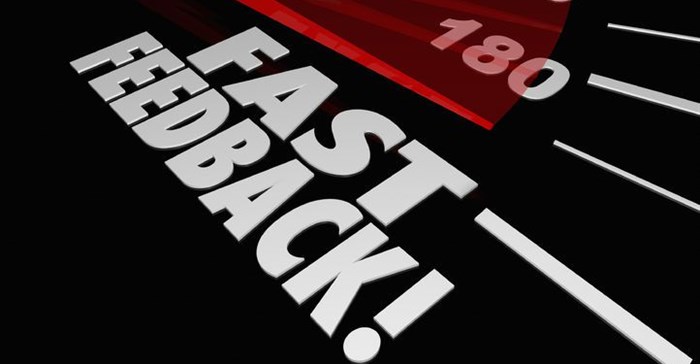How quickly and effectively marketers respond and adapt to ongoing consumer feedback is the new determinant of brand performance according to a new survey report, released by the Chief Marketing Officer (CMO) Council.
According to 90% of the 150 brand marketers surveyed, responsiveness – or the ability to source, understand and then quickly react to feedback, preferences and needs – is important, if not critical, to the delivery of an exceptional customer experience. Yet only 16% of marketers feel their organisations are extremely responsive to the consumer, failing to make changes to products, packaging, services and experiences based on real-time consumer requests and feedback.
“The responsiveness requirement: How agile marketers act on consumer feedback to drive growth,” is the comprehensive research study undertaken by the CMO Council in partnership with Danaher Corporation's product identification platform companies.
The study, undertaken in the second quarter of 2017, investigated how organisations are faring when it comes to responding to customers and leveraging customer data and intelligence to deliver the right experience in the right moment and through the channel of the customer’s choice, whether it is a physical or digital touchpoint.
Top deterrents
The top issues holding marketers back from accelerating responsiveness include:
- Lacking the budget to move forward on more frequent updates to physical touchpoints.
- Not having the data or intelligence to make changes based on customer reactions and behaviours.
- Functional teams separating marketing from product and packaging decisions.
- Vendors unable to work quickly or meet expedited timelines.
To remedy these challenges, marketers feel a cultural shift will need to occur, including new processes and tools to execute changes faster, as 60% of respondents believe a focus on customer over product will need to take place for any significant progress to be made.
Customers expect lightning-fast reactions
“Customers fully expect for brands to engage at the speed of light. The exceptional customer experiences from brands such as Amazon and Starbucks have proven that rapid response, personalisation and real-time (or near real-time) omnichannel engagements are possible at the push of a button or click of an app,” said Liz Miller, senior VP of marketing for the CMO Council. “This is engagement at the speed of digital and the customer expects a similar level of responsiveness across all experiences, regardless of whether the channel is physical or digital.”
On average, marketers feel they are able to respond or react to consumer feedback, requests, suggestions or complaints specific to marketing campaigns in less than two weeks. In fact, 78% of marketers surveyed are able to meet this fast expectation, with 43% actually saying that they are able to respond to the consumer within 24 hours, effectively setting the expectation with consumers that responsiveness is possible. However, when it comes to physical touchpoints, 77% of respondents admit it can take up to 90 days to respond and react to customer feedback, suggestions or issues, with 36% needing up to three months to respond.
Agile marketing teams are looking to address this execution and engagement gap as 53% of respondents acknowledge that their goal is to deliver updates and make changes to physical touchpoints in under 14 days, with 20% of marketers hoping to see that gap narrow to just 24 hours to deliver updates across physical experiences.
Recommendations
According to the experts at Danaher Corporation, whose portfolio includes brands such as Pantone, MediaBeacon, Esko, X-Rite and AVT, if responsiveness in physical media is to be turned into a true competitive advantage, key questions must be asked and steps must be taken. Recommendations include:
- Corral all the content makers: Are these teams using separate systems now? Can we leverage one to remove the cost of others?
- Connect technologies for real-time transparency: How many technologies do we use to bring all our physical and digital consumer communications to market? Where are the inefficient hand-offs?
- Rather than focusing on one silo of work, think about how we can simplify the entire value chain: What would the impact be on our business if our time to market for physical and digital communications was half of what it is today?
“With recent great advances in digital media delivery, unfortunately, the capability to make changes to physical media has been a laggard,” noted Joakim Weidemanis, group executive and VP, product identification at Danaher Corporation. “Many people simply don’t know what’s possible until they decide it will be so. Advances in technology today allow business leaders to demand more speed, higher quality and greater transparency from their partners and vendors than ever before. Even more powerful for global brands is that such technology is available all over the world.”
The study was conducted in the spring of 2017 and includes input from more than 153 senior marketing executives. Fifty-four percent of respondents hold a title of CMO, head of marketing or senior VP of marketing, and 33% represent brands with revenues in excess of $1bn. To download the report, click here.
























